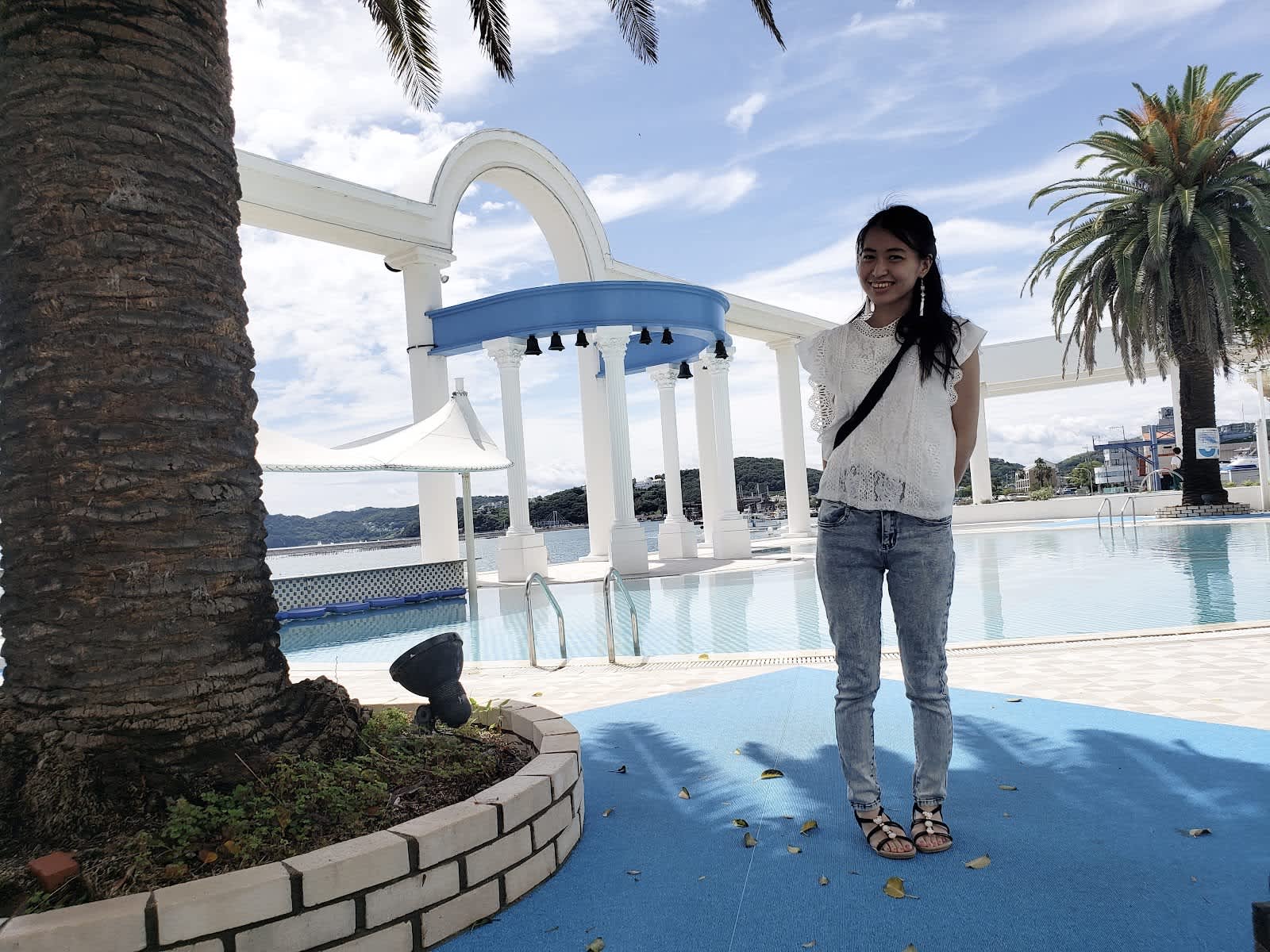
Hi Saki, thanks for talking to us today. Could you tell us about yourself?
Hello! Thanks for inviting me today. My name is Saki, Japanese born and raised in Okayama, known as the land of sunshine. I am a Japanese tutor as well as a blogger. I have become passionate about Japanese culture, specifically the traditional aspect, since I started live streaming through Periscope so I could improve my English speaking skill. I was honoured to be featured on the app where I enjoyed showing my culture to the world. I also made many great friends from all over the world, who are very supportive, and help me learn about my own culture deeply.
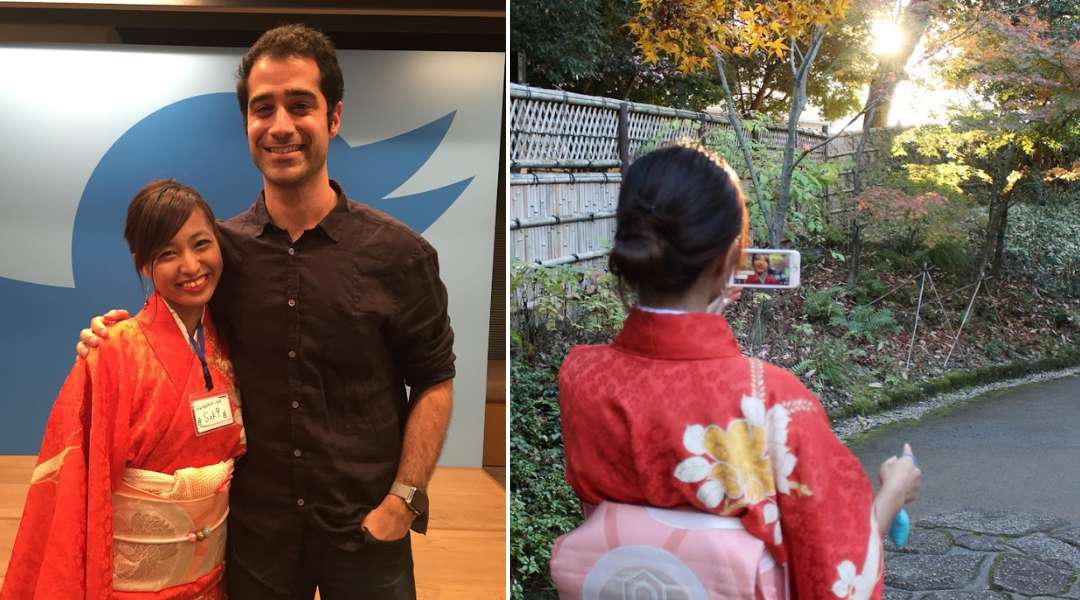
What got you into tutoring Japanese?
I have been very interested in foreign languages and as a language learner myself, I’ve wanted to do something with my language skill for a long time. I started to work as a translator/interpreter (Japanese and English) at first, but I realized that I enjoyed teaching Japanese more when the tutoring opportunity occured by chance. While tutoring, I am able to use and combine my knowledge about Japanese culture which I gained over years through my live streaming experience. This job also allows me to do more creative work which I have enjoyed doing on my blog/social media. I also love the fact that I can see my students being more confident in their Japanese, and getting motivated in our lessons. I know the struggles in the process of learning a new language very well, since I have been going through the same. On the other hand, I also know how rewarding it feels when you manage to communicate or see your progress yourself even a little. I aim to be more than a language teacher who can help people learn a culture, as I believe the language and culture are closely connected and you cannot learn just one of them. My students are also my teachers who have taught me a lot. We often enjoy sharing our cultural differences or ideas in our lessons which is my favorite part of tutoring Japanese.
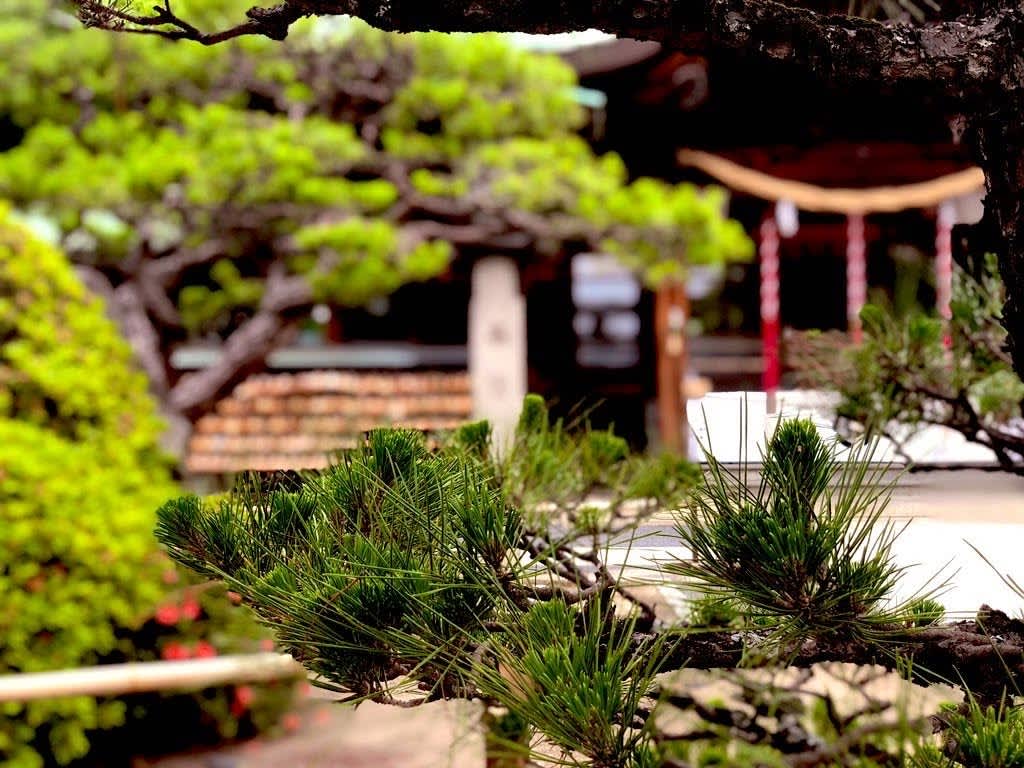
What are your top tips for Japanese-language learning beginners?
Well, ideally I would recommend getting a tutor or joining a Japanese course so you can stay motivated, keep on track and learn more efficiently with your tutor. However I know it’s not possible for everyone.
In Japanese, we say 「学問に王道なし」 (Gakumon ni oudou nashi) which means “There is no royal road to learning “. I believe finding the way that works for you is also a part of your language learning journey. As I have tutored different students, I know that each student has different ways of learning Japanese and a part of my job has been to figure out the best and fun way to learn Japanese with them as well.
That being said, Japanese characters may look overwhelming, especially for beginners. I had to learn alphabets from scratch when I started to learn English. Please take your time to learn them at first, especially Katakana which many people tend to struggle with. Romaji are easy to follow at first, but the pronunciation is not the same. For Kanji learning, one of the methods that we Japanese use at school is to separate radicals and classify them. For example, there is a kanji 「心 (Kokoro)」meaning “heart, mind”. There are many kanji that include a part of this one such as 「恋 (love)」、「悲 (sad)」、「思 (think)」 that are related to our mind. You can connect them while learning. Kanji can be very challenging, but I can assure you that it’s the most interesting and artistic part of Japanese.
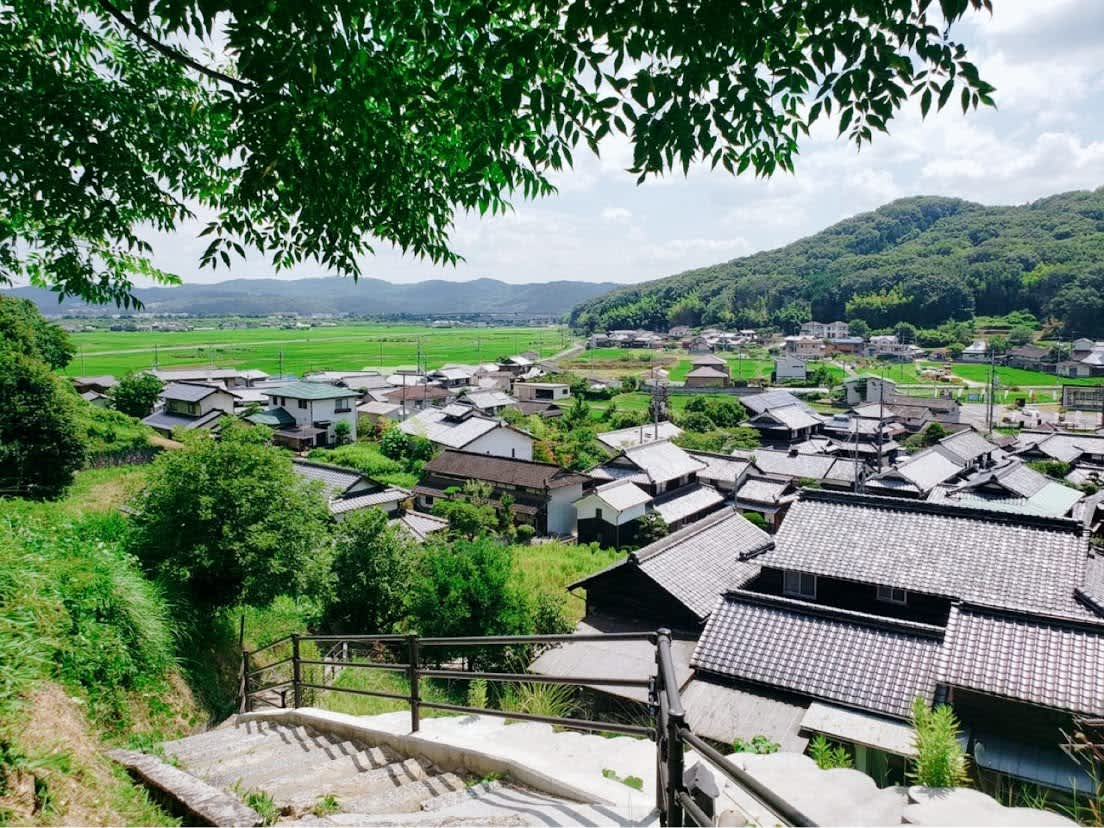
What works for me personally for language learning is connecting something I like with it. For example, I enjoy writing my thoughts on Japanese culture in English on my social media platforms. I love fashion as well, so I love to read about it in a foreign language I am studying. The key is to find something you can be consistent about. Even 5 minutes of learning every day counts. Make sure that you do input as well as output by using them. I find the balance between them very important. If you don’t find people to practice with in your local area, you may find people to talk to on the internet nowadays. I am sure there are Japanese English learners that will be happy to do a language exchange with you. I hope you will find the way that works for you.
What can people do if they are interested in being tutored by you?
Thanks for asking. You can always reach out to me on my socials such as Twitter, Instagram and Facebook page. I have my own website where you may find my contact page as well as my work. I would be happy to hear from you! In the future, I am thinking of offering different services related to Japanese culture and language, so for any updates, make sure that you follow me there.
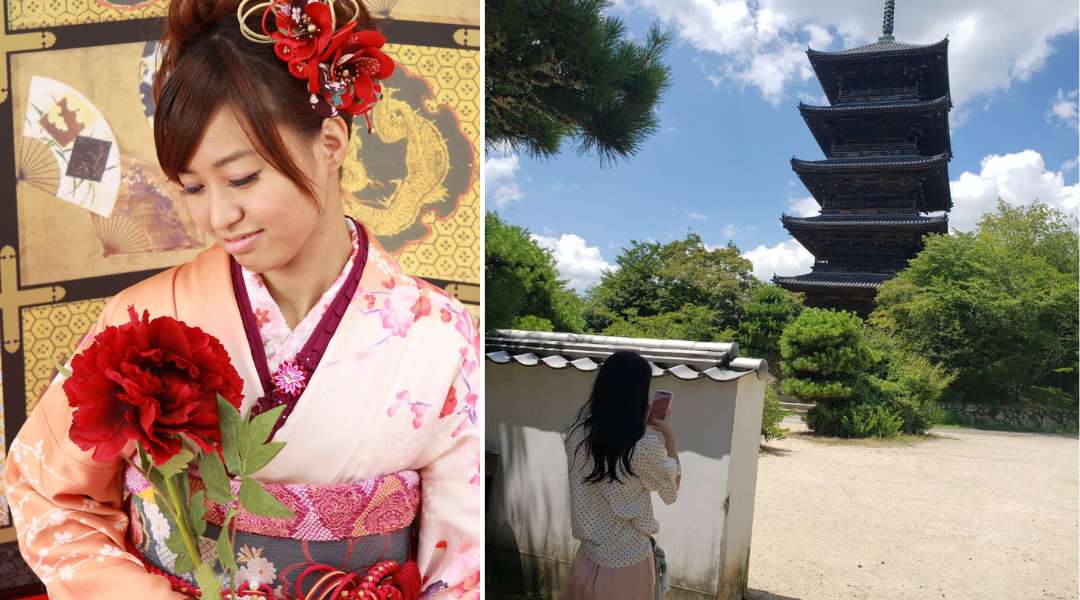
Why kimonos? What about them speaks to you?
Kimonos have been something close to me, because of my family members owning a lot of nice ones and I had the chance to look at them closely. In modern days though, Kimonos are something we wear only on special occasions and unfortunately I didn’t have the chance to grow my passion for a long time even though I remember I loved the feeling of putting kimono on during my coming of age ceremony.
As I become passionate about Japanese traditional culture during the live streaming experience, it occurred to me naturally that I would like to learn more about Kimono and show it to people from the world. Soon after that I registered myself in a Kimono fitting course and started to learn how to put them on by myself. Many Japanese people get professionals to put kimono on but I wanted to be able to do it whenever I feel like wearing it. It was one of the best decisions ever, because I could walk in Kimono on my trips abroad. Every time I get to wear a Kimono, I am excited and grateful for being a part of such a beautiful culture. I would like to represent Japan with Kimonos and am hoping to inspire more people outside Japan.
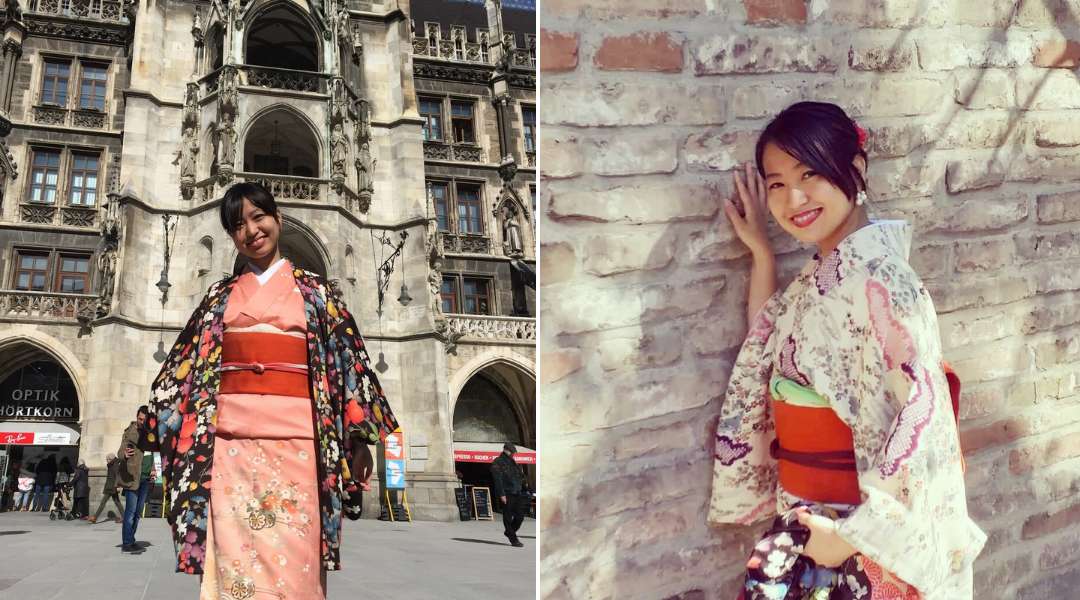
Can you give us a basic breakdown of the different components that make up a kimono?
First of all, what you can’t miss are “着物 (Kimono)” and ”帯(Obi)”. Obi is a large sash wrapped around the waist over the Kimono. It is tied in a knot or bow depending on contexts or different kinds of Kimono. The combination of Kimono and Obi is very important and that is where you can have fun using your creativity. In general, Obi plays an important role for the whole style and Japanese value this part the most. That’s why you may find Obi more pricey than Kimono.
There are some accessories for Obi such as ”帯締め (Obijime), which is decorative cords where we use them to secure the whole Obi by tying them around. For more decorations, on Obijime, we add a broach called “帯留め (Obidome)” as well. “帯揚げ (Obiage)” looks like a scarf but functions to cover the decorations underneath too. You may find beautiful designs of all of these accessories and enjoy combining them by looking at your Kimono/Obi combinations.
For shoes, we wear either “下駄 (Geta)”, “草履 (Zouri)”, or “雪駄 (Setta)”, depending on the formalities. Zouri is usually worn on formal occasions. You may have seen these shoes somewhere. People often ask me if it’s comfortable or not to wear them. I would say it depends, but it can be difficult if you are not used to wearing them even as Japanese. However, good news is that companies these days try to introduce some features where you can wear them as comfortably as possible.
Last but not least is “襦袢 (Juban)”. This is a Kimono worn under the Kimono. It is kind of like underwear for Kimono. Juban can be seen as a collar and sleeves too. The most formal one we choose is the white one, but you can be creative about the colors or designs of your Juban on informal occasions. Advanced Kimono lovers play with this part. You can be very fashionable with it.
There are more of course, but if you know the above, you already have a good knowledge of Kimono!
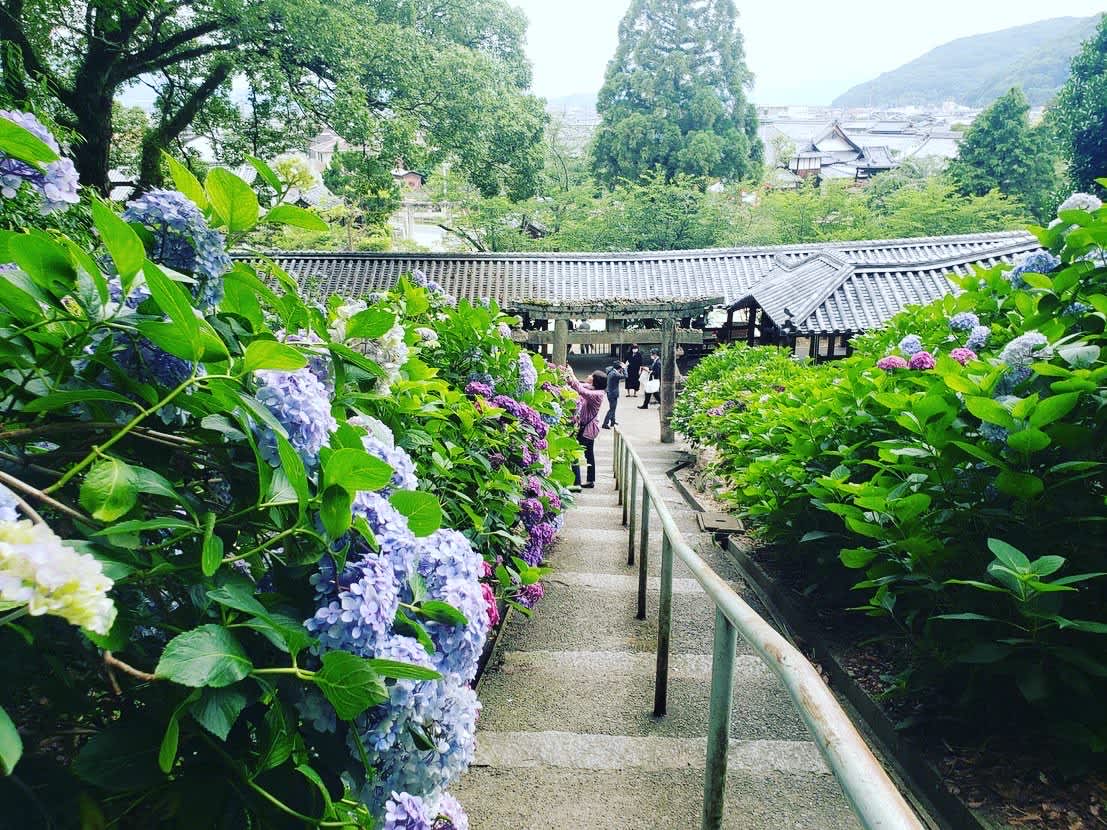
What advice would you give to travellers to Japan who want to try on kimono but don’t know where to start or are hesitant about it?
Yes, of course! I am aware that this subject may be a sensitive topic with cultural appropriation. For sure we Japanese may have different boundaries and would like it more when you gain some knowledge behind it. However, this shouldn’t stop you from trying Kimono in Japan! Kimono is a big part of our culture and if you come to Japan, I suggest you try it. There are a large number of Kimono rental shops in Japan and in touristic places they offer in English in their services. If you have no idea where to start, these rental services are where you can try at first. They offer packages where you can rent everything you need and get help while putting them on. You can customize colours/patterns of Kimono, Obi and your accessories there. They usually have a lot of collections to choose from.
If you are looking to buy a Kimono, you should do it in Japan too. The price range is actually very wide. Many people assume that Kimonos cost a lot. While I think it is true, I must add that there are affordable options as well, especially antique Kimonos. Antique Kimonos are those which used to be put away under the closets in Japanese family homes for years. They have gained more attention because of sustainability. Younger generations are increasingly interested in introducing Kimono in modern fashion as well and I see more shops that sell Kimonos/Obis that are easy to take care of as traditional Kimonos can require special care and be a hassle. The good part of high quality Kimonos is that you can keep them for years over generations. Kimonos are traditionally taken on and stored as a family treasure. Today we could buy new and cheap clothing very easily but it would be great if we all could again embrace the idea of using it for a long time with great care. I believe Kimono has the potential to deepen cultural understanding and connect people from the world. I hope that more people will get to experience my culture through Kimono.

What are some must-see spots in Okayama?
I assume that travelers who have been to Hiroshima most likely did pass through Okayama before maybe without noticing, but why don’t you stop by it next time? Okayama actually has a lot to offer with rich nature and history. Korakuen garden, Okayama castle, Kurashiki Bikan historical district and Kibitsu jinja shrine are well known and nice places to visit. You may find a lot of information about it in your research. What I like about Okayama is that these places are easy to reach and you can walk around from the city center/station.

My favorite thing to do in Okayama is hop on the train called “Marine Liner” and travel to Shikoku island. Since Okayama is located near the Seto Inland sea, we have a lot of small islands. When the weather is nice, you can see the beautiful view of these islands and the Seto inland sea from the train. This train operates on the beautiful bridge “Seto Ohashi bridge”. It was built by skillful Japanese workers and changed people’s lives greatly. I would say, it is meaningful for us in the historical perspective too.
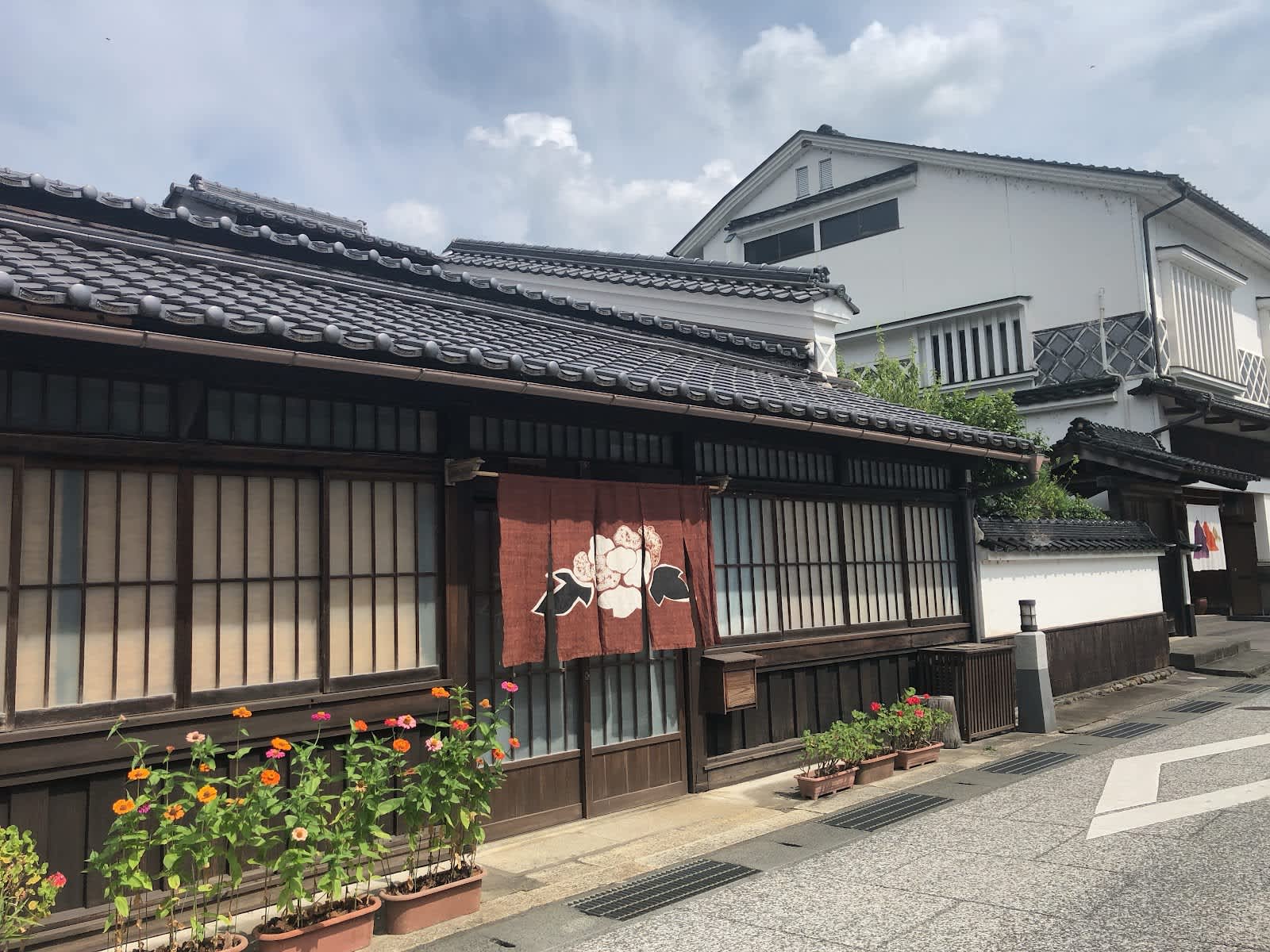
My other favorite place is Katsuyama historical preservation district. Katsuyama is a historic town which used to be a post station. In this area, you may see a lot of well preserved Japanese traditional buildings as well as enjoy looking at beautiful “Noren”- traditional Japanese fabric dividers hung in the entrance of shops. There are also Sake breweries and cafés that utilize the beautiful traditional houses and storehouses. Relating to sake; If you love Sake, you should definitely try “Omachi” in Okayama. It’s one of Okayama's specialties.
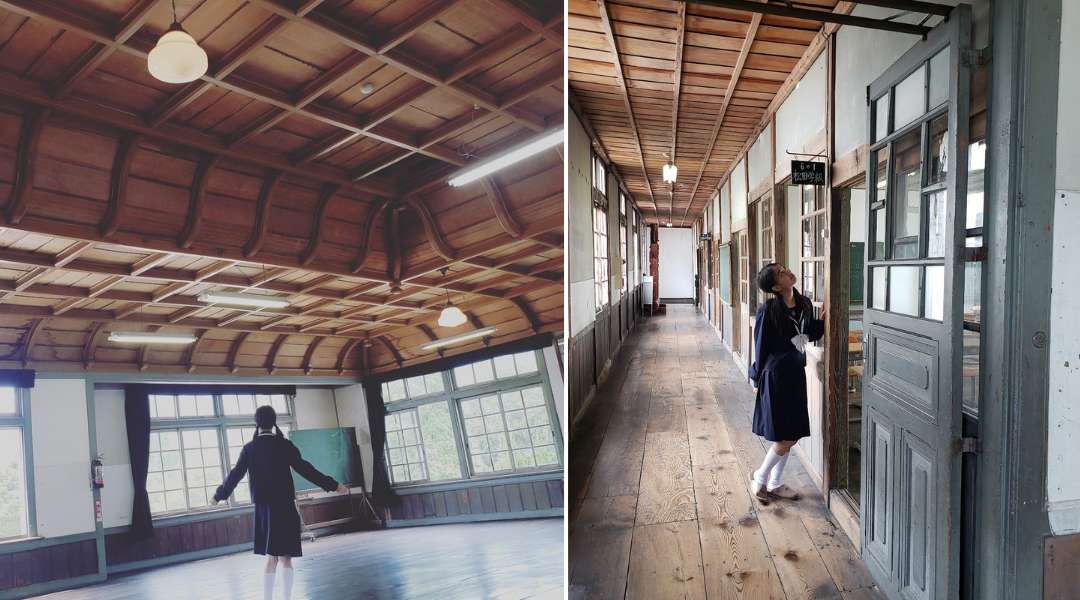
In this area, there’s also a historical school building called” Former Senkyo Jinjo Elementary School”. The popular Japanese movie series called “ Always: Sunset on Third Street” was shot here. This wooden school building was constructed in 1907, and represents the example of school construction in the Meiji period (1868-1912).
And there are much more! I hope you’ll come explore my hometown Okayama.
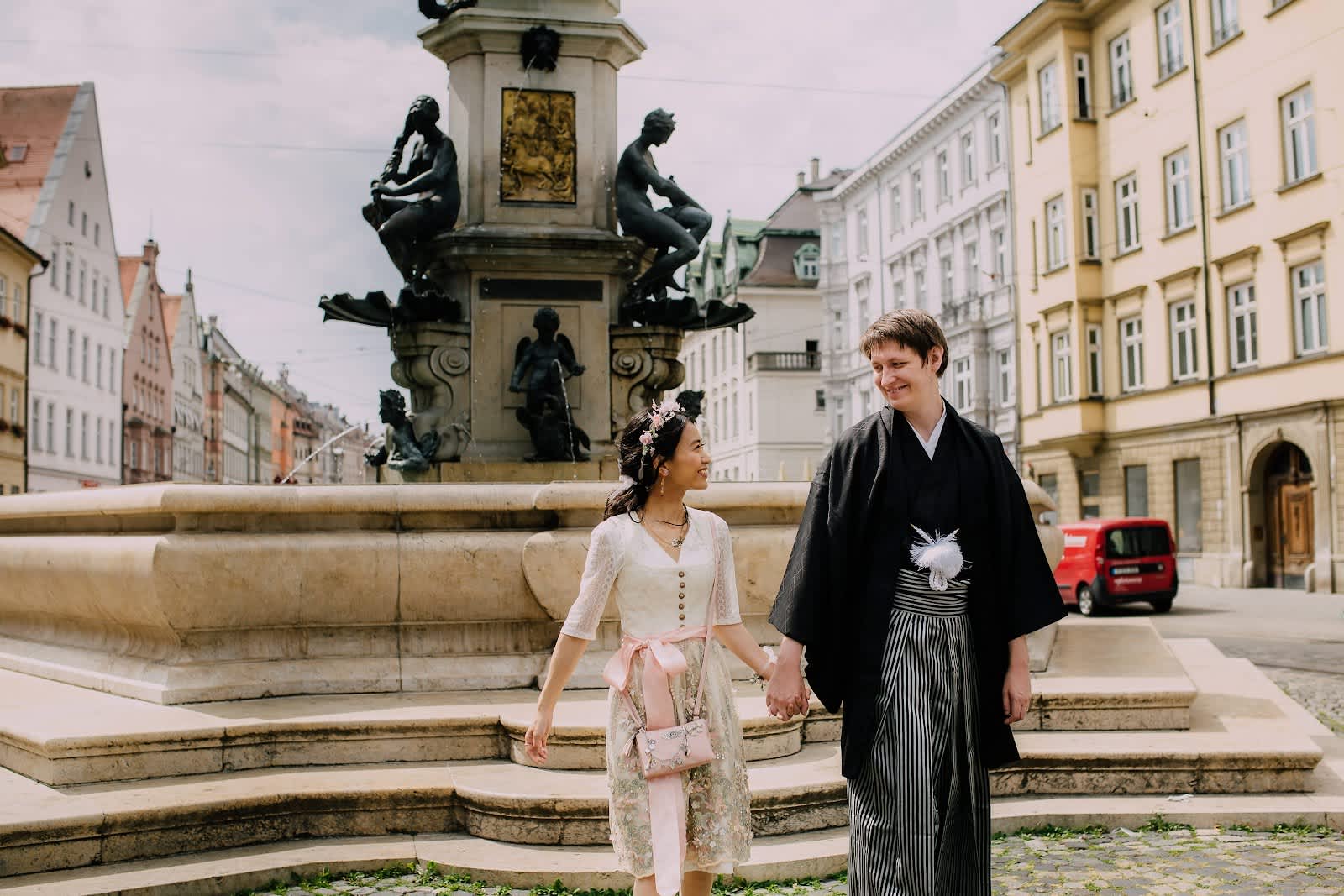
And lastly, what’s in store for the future for you?
I would love to keep tutoring Japanese and keep showing the Japanese traditional culture which has helped me to learn about Japan on a deeper level. There are more things I don't know yet that I am willing to learn about. That applies not only to something related to Japan, but also to anything new. It has been such a great experience and I am grateful that people show support and love to what I have been doing. If I could inspire anyone, help learn something about Japan or even get you interested in Japan a bit with my work, I couldn't be happier.
Another thing I am very interested in is connecting different cultures. I recently got married and my husband is from Germany. Because we both are interested in each other's culture, we decided to exchange our traditional wedding clothings on our wedding day. I wore the traditional dress from Bavaria called "Dirndl" while my husband wore a Kimono called "Montsuki Hakama". I also included my “Kamon” (family crest) in the “Charivari” (decorative chain from Barvarian culture). That was an absolutely amazing experience and helped us to connect more. We got to know each other’s traditions, history and clothings while we were preparing for the ceremony. There are so many beautiful traditions in the world that I would love to get to know about. I can’t wait to connect them with Japanese culture in the future.
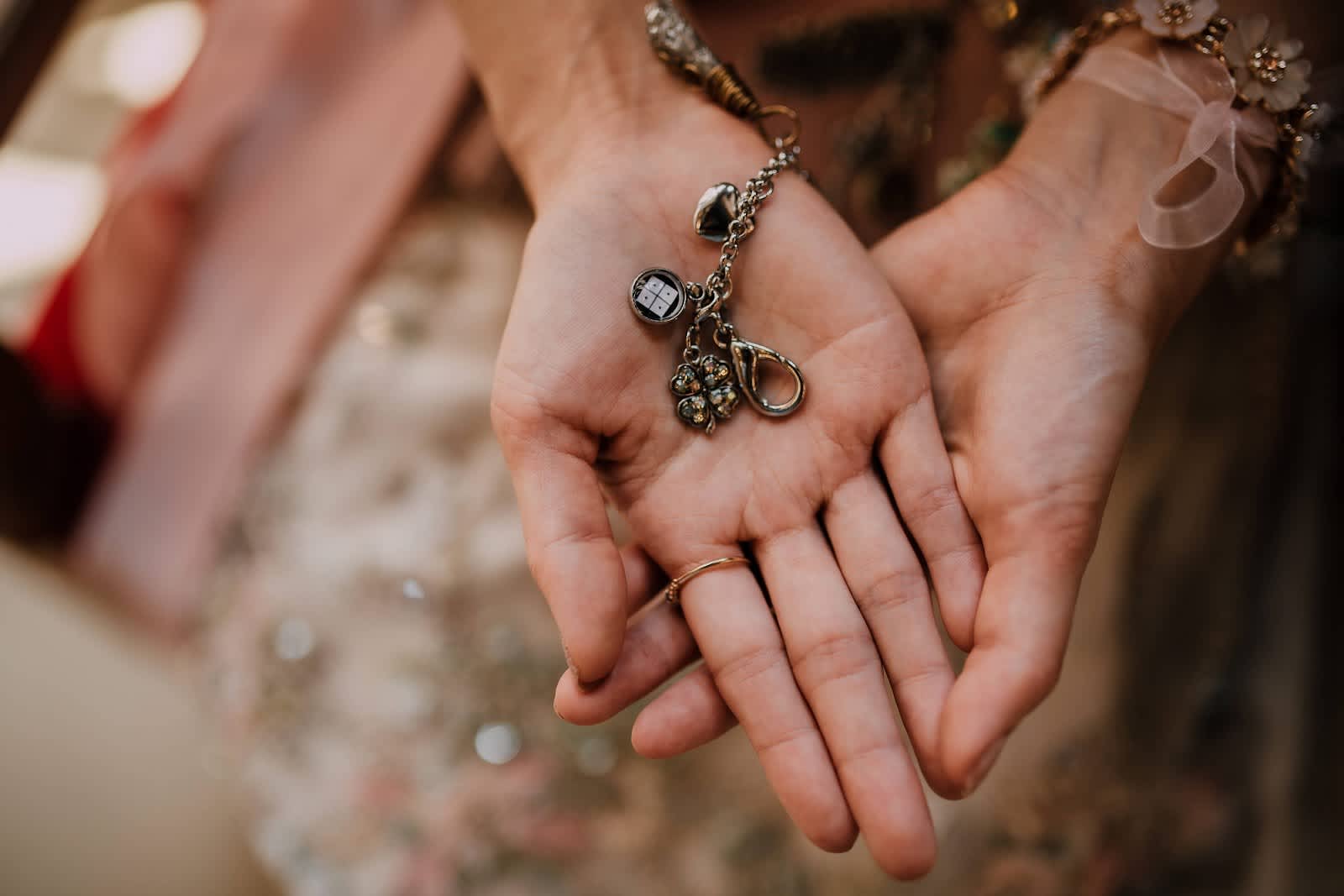 Saki's 'Kamon' or family crest on the decorative 'Charivari' chain from Barvarian culture
Saki's 'Kamon' or family crest on the decorative 'Charivari' chain from Barvarian culture
You can follow Saki across her various social channels on Instagram, Twitter, Facebook, and of course via her website.

















































